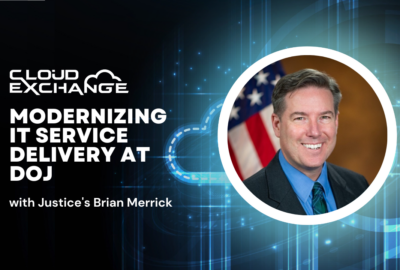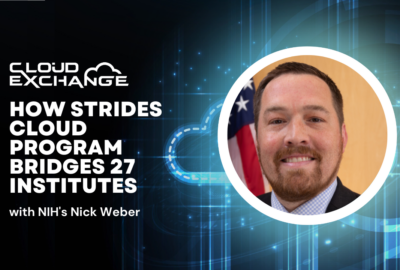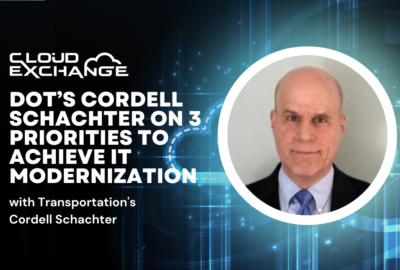

Although agencies talk less now about moving to the cloud strictly to save money, they do need to define how they value digital transformation, explains Splunk’s...
It’s more than a decade since most agencies began their cloud journeys, and yet a focus on cost savings continues to remain prominent.
In some case, cloud services will be cheaper. In many cases, agencies will trade equal or increased costs for better and more secure services. That requires doing a cost-benefit analysis. Agencies need to put a value on how they gain from digitally transforming through use of the cloud, said LaLisha Hurt, industry advisor at Splunk.
The first step in figuring that out is to understand and identify why the agency is migrating to the cloud in the first place, Hurt said during the Federal News Network Cloud Exchange 2023.
“I hear that all the time: ‘I want to move the cloud because I want to save money.’ But those agencies that are clearly identifying their pain points, looking to industry solutions that align to those pain points, measuring business outcomes after migration occurs and continuing to improve and optimize beyond migration are finding the most success,” she said.
Hurt shared an example of a civilian agency that moved to cloud-based services to align to the IT organization’s cloud strategy. “They wanted to actively reduce their IT infrastructure and maintenance costs, but they also wanted to achieve higher agility and scalability to meet the business’s changing needs, which was their kind of why.”
That agency had a few chief pain points that it could measure against, she said: reducing the time and resources necessary to maintain legacy systems, automating mundane tasks, increasing compliance, reducing risk and improving cybersecurity.
The agency achieved incremental success because the IT organization identified the value it would get from transformation and chose the right partner to help make it happen, Hurt said.
Today, the questions that agencies are asking are beginning to evolve, she said: “How do I align my cloud services to the business admission needs to make sure I’m driving outcomes beyond just efficiency and agility? … How do I build that multicloud strategy approach for speed, resilience and business value?”
Agencies are “transitioning from the cost conversation, which is great. Now the questions are focused on, ‘How do I integrate those cloud technologies to serve as a force multiplier for my digital strategy?’ That goes back to, ‘How do I integrate applications?’ Also, ‘How do I integrate services and not look at them as standalone technologies?’ is a big one that I get a lot.”
To answer such questions and ensure the focus is on value and business outcomes, Hurt suggested doing some initial research and analysis, starting with data. That’s because, for nearly all mission areas, data is a fundamental piece of the transformation strategy, she said.
Hurt said it’s surprising how many organizations struggle to answer seemingly simple questions about their data.
“Implementing that cohesive data strategy that really considers all your data sources, how data integrates effectively across silos and delivers comprehensive visibility across the IT environment, is difficult,” she said.
It’s also important that IT organizations have executive sponsorship and buy-in, Hurt said, which helps cultivate a culture and environment where everyone’s rowing “in the same boat together in the same direction.”
Sometimes that requires taking a step back from the technology and its implementation and instead focusing on ensuring the agency has a holistic, comprehensive strategy for digital transformation, she said.
Too many agencies still lack holistic comprehensive strategies because they are too focused on migration and implementation of cloud services, Hurt added.
Although a shift beyond the initial adoption of cloud services has begun, she said she would like to see more discussions about digital transformation that broaden to include not only the cloud but other technologies like artificial intelligence, machine learning and automation.
Tip 3: Lean into AI and automation to increase security, manage operational IT costs
“A couple of trends we’re seeing this year and expect to see in the years to come are around AI and machine learning, where we will see increased automation and self-learning capabilities, and more personalized cloud experiences,” Hurt said.
The potential of AI/ML for improving cybersecurity and helping manage costs associated with compute and storage will likely be key drivers as agencies digitally transform, she suggested.
On the security front, AI/ML will help with anomaly detection, such as “looking at those anomalies and cloud uses that might indicate that there’s an issue, such as a sudden rise in cloud storage or compute resource,” Hurt said.
Agencies will also likely be looking to use security as a service providers to improve security and resilience, Hurt added. “We’ll see predictive technology to really help detect risks before they actually arise,” she said.
“We’re also seeing a little bit more optimization, where agencies are using machine learning to help analyze usage patterns and make recommendations for optimizing utilization for their environments,” Hurt said.
IT organizations will likely use this type of information to better determine their computing needs, figuring out “when to use reserved instances or identifying those underutilized resources that could be scaled back or eliminated,” she said.
Hurt also echoed what many federal leaders have been publicly saying: “We can expect to see more adoption around multicloud and hybrid IT strategies, where we’re combining obviously on premise, dedicated private clouds, several public clouds and even those legacy applications and platforms — to include mainframe.”
And just for fun, she also expects that cloud gaming will gain steam as 5G services take hold.
To read or watch other sessions on demand, go to our 2023 Cloud Exchange event page.
Copyright © 2025 Federal News Network. All rights reserved. This website is not intended for users located within the European Economic Area.




Industry Advisor, Splunk

Executive Editor, Federal News Network

Industry Advisor, Splunk
In her strategic advisory role centered on executive level outreach and engagement, LaLisha provides guidance, direction and thought leadership to Federal government agencies around Splunk’s platform capabilities to drive security and resilience.
Prior to joining Splunk, LaLisha served in various CISO roles at General Electric, GDIT and Capital One building, enabling and growing technology shared services for the federal government and commercial vertical markets. She is a lifelong learner with a B.S. in Systems Engineering from the University of Virginia, M.S. in Information Assurance from UMUC and a MBA from the University of Baltimore with several ISACA industry certifications. LaLisha is an adjunct professor for Carnegie Mellon University’s CISO executive program, STEM advocate and has a strong passion for building a diverse and inclusive workforce for the future.

Executive Editor, Federal News Network
Jason Miller has been executive editor of Federal News Network since 2008. Jason directs the news coverage on all federal issues. He has also produced several news series – among them on whistleblower retaliation at the SBA, the overall impact of President Obama’s first term, cross-agency priority goals, shared services and procurement reform.
